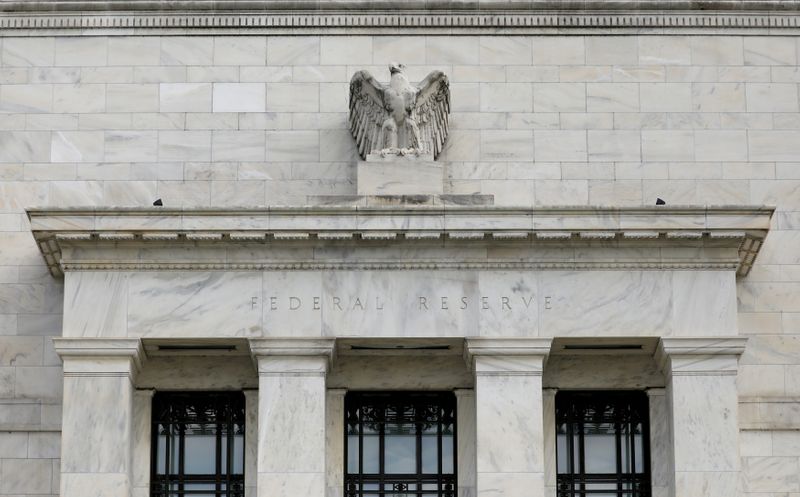By Dhara Ranasinghe and Karin Strohecker
LONDON (Reuters) - In May 2013, bond investors threw a tantrum after hints the U.S. Federal Reserve might slow the money-printing presses. A similar selloff now, with another $70 trillion added to global debt, could prove to be far more vicious.
A 2013-style "taper tantrum" was named as one of the top market risks in BofA's February poll of fund managers who fear a pick-up in inflation expectations might soon persuade central banks to start withdrawing or "tapering" stimulus.
Some like former U.S. Treasury Secretary Larry Summers even predict this will happen sooner than anticipated if huge government spending sparks runaway inflation.
Such fears drove U.S. 10-year borrowing costs to near-one year highs on Tuesday. Equities slipped off record peaks; long-dormant gauges of Treasury market volatility flickered into life.
"Higher rates means higher rates volatility, means higher spreads and market selloffs as we saw back in 2013," said Kaspar Hense, portfolio manager at BlueBay Asset Management who has pared exposure to Treasuries, expecting their 30-40 bps year-to-date yield rise to continue.
"There is no doubt the risks are greater this time around than 2013 because of the high leverage in the system."
Global debt today stands at $281 trillion, according to the Institute of International Finance, versus $210 trillion in 2013. Companies and households too owe significantly more.
Economic growth and inflation can whittle away debt. Yet the very policies put in place to aid recovery can encourage more borrowing.
Debt is keeping central banks in "a loop of never-ending provision of liquidity and of very low interest rates," said Steve Ellis, global fixed income CIO at Fidelity International.
"The only way to keep the plate spinning is keep refinancing costs low."
Graphic: Debt levels on the rise since 2013 Taper Tantrumb - https://graphics.reuters.com/GLOBAL-BONDS/TANTRUM/bdwvknkrepm/chart.png
What bears watching is the "real" or inflation-adjusted bond yield that represents the true cost of capital. The 100 bps-plus spike in real U.S. yields of 2013 has not happened so far this time, sparing equities and emerging markets the fallout.
It also implies markets are not factoring a central bank response to higher inflation expectations.
That may be why, taper tantrum fears notwithstanding, BofA survey participants are holding equity and commodity allocations near decade-highs -- with real yields near minus 1%, U.S. stocks still pay a 5% premium over bonds.
HIGHER, LONGER, WILDER
It's not just the sheer weight of debt that makes markets more sensitive to interest rate moves.
After the interest rate collapse of recent years, just 7.8% of global government and corporate bonds on the Tradeweb platform yield 3% or more.
Global shares trade at 20 times forward earnings versus 12.5 times in May 2013.
Investors have fanned out into higher-yielding junk-rated debt and the BofA survey found a record proportion holding above-normal risk exposure.
Finally, investors are loaded up on longer-maturity debt.
Duration -- how long it takes to recoup the original investment -- is now 8.5 years on the ICE (NYSE:ICE) BofA World Sovereign Bond Index, two years more than in 2013.
Graphic: Investor exposure to duration rises - https://graphics.reuters.com/GLOBAL-BONDS/oakveradypr/chart.png
Longer-dated assets also expose investors to higher 'convexity' in the price-yield relationship, meaning a small rise in yields causes outsize losses.
That's been highlighted this year to holders of Austria's 100-year issue where a 35 bps yield rise has knocked prices 20% lower. Similarly, a 40 bps rise in 30-year U.S. yields has translated into a 4% price fall.
Ellis estimates holders of 10-year Treasuries would lose 4.62% over a month if yields rise 50 bps from current levels. A similar rise would have caused a 4.46% loss in 2013.
Similarly, JPMorgan (NYSE:JPM) Asset Management calculates a 1% rise across the U.S. curve would cause total annual price returns on a 30-year Treasury to fall 19%. Two-year notes would suffer a 2% price loss.
NOT ALL BAD
Some say delaying the tantrum might make matters worse.
"It's better to put up with the tantrum when someone is two than when they are 14," said David Kelly, chief global strategist at JPMorgan Asset Management.
Graphic: Are markets gearing up for another taper tantrum? - https://fingfx.thomsonreuters.com/gfx/mkt/yzdpxwndrvx/tapertantrum1502.png
But most policymakers have made clear they will not hurry. Cleveland Fed President Loretta Mester for instance said the Fed was keen to avoid taper tantrums and wouldn't withdraw support until the economy was stronger.
Central banks also are less keen than previously to tighten policy in response to a price surge, having repeatedly pledged low rates even if inflation overshootsm.
Scars from 2013 and higher global indebtedness will force central banks to "lean against" market tantrums, asset manager BlackRock (NYSE:BLK) reckons.
Finally, emerging markets which bore the brunt of past tantrums, appear better placed this time. Many countries, including those reliant on foreign capital in 2013, now run balance of payments surpluses.
"Positioning in emerging market securities and currencies is far below previous cycle peaks, especially 2013," said Bryan Carter, head of EM debt at HSBC Asset Management, pointing to higher bond risk premia and cheaper valuations.

Graphic: U.S. yields and EM capital flows - https://fingfx.thomsonreuters.com/gfx/mkt/oakvermzxpr/US%20yields%20and%20EM%20capital%20flows.PNG